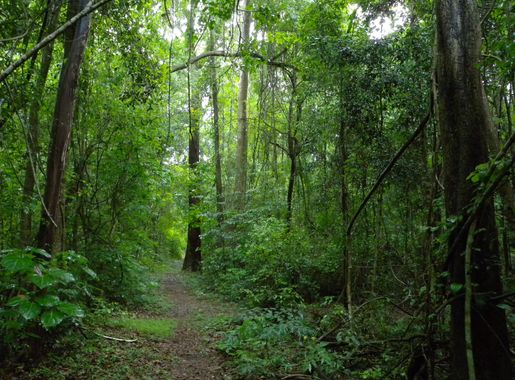
Ankarafantsika National Park: Madagascar's Hidden Gem
Discover the untouched beauty of Ankarafantsika National Park, where unique wildlife and stunning landscapes create an unforgettable adventure in Madagascar.
Ankarafantsika National Park is a natural treasure located in the northwestern part of Madagascar. This park is famed for its rich biodiversity and unique landscapes. It is a haven for nature lovers and those looking to explore Madagascar's wild side. The park's varied ecosystems include dry deciduous forests, wetlands, and savannas, making it a perfect spot for any adventurer. The park is home to many species of plants and animals found nowhere else on Earth. You can spot lemurs, chameleons, and a variety of birds as you explore the trails. The Coquerel's Sifaka, a type of lemur, is one of the park's most famous residents. Birdwatchers will be thrilled by the chance to see the endangered Madagascar fish eagle and other rare species. Aside from its wildlife, Ankarafantsika offers stunning landscapes. The park features beautiful lakes, such as Lake Ravelobe, where visitors can take boat trips. The dramatic canyons and the dense forest canopy provide a picturesque backdrop for hiking and photography. The park also has historical significance, with archaeological sites that give insight into Madagascar's past.
Local tips in Ankarafantsika National Park
- Visit the park during the dry season (April to October) for the best wildlife viewing opportunities.
- Hire a local guide to enrich your experience and help you spot the diverse wildlife.
- Wear comfortable hiking shoes and bring plenty of water, as some trails can be challenging.
- Don't forget your binoculars and camera to capture the incredible birdlife and scenic vistas.
- Respect the local customs and the natural environment; do not disturb the wildlife.
Ankarafantsika National Park: Madagascar's Hidden Gem
Ankarafantsika National Park is a natural treasure located in the northwestern part of Madagascar. This park is famed for its rich biodiversity and unique landscapes. It is a haven for nature lovers and those looking to explore Madagascar's wild side. The park's varied ecosystems include dry deciduous forests, wetlands, and savannas, making it a perfect spot for any adventurer. The park is home to many species of plants and animals found nowhere else on Earth. You can spot lemurs, chameleons, and a variety of birds as you explore the trails. The Coquerel's Sifaka, a type of lemur, is one of the park's most famous residents. Birdwatchers will be thrilled by the chance to see the endangered Madagascar fish eagle and other rare species. Aside from its wildlife, Ankarafantsika offers stunning landscapes. The park features beautiful lakes, such as Lake Ravelobe, where visitors can take boat trips. The dramatic canyons and the dense forest canopy provide a picturesque backdrop for hiking and photography. The park also has historical significance, with archaeological sites that give insight into Madagascar's past.
When is the best time to go to Ankarafantsika National Park?
Iconic landmarks you can’t miss
Ankarafantsika National Park Canyon Viewpoint
Discover the stunning beauty of Ankarafantsika National Park Canyon Viewpoint, a must-visit hiking area in Madagascar offering breathtaking views and unique wildlife.
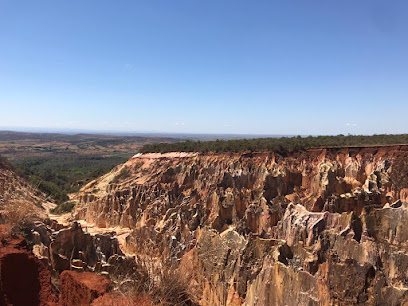
Circuit Retendrika (Ankarafantsika National Park)
Explore Circuit Retendrika in Ankarafantsika National Park, a breathtaking destination in Madagascar showcasing stunning landscapes and diverse wildlife.
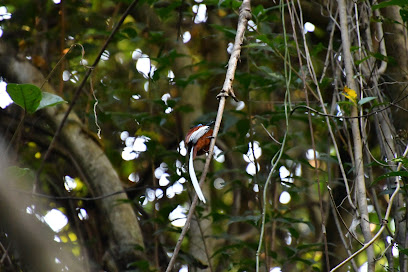
Unmissable attractions to see
Le Baobab de Majunga
Explore the iconic baobab trees of Le Baobab de Majunga, a stunning natural attraction in Mahajanga, Madagascar, showcasing the beauty of the island's unique flora.
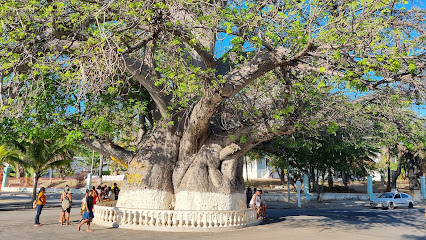
CIRQUE ROUGE
Explore the awe-inspiring landscapes of Cirque Rouge, a national reserve in Mahajanga, home to stunning red rock formations and diverse wildlife.
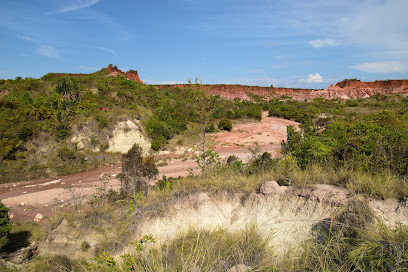
Village Touristique
Experience the vibrant culture and stunning landscapes at Village Touristique, a premier tourist attraction in Mahajanga, Madagascar.
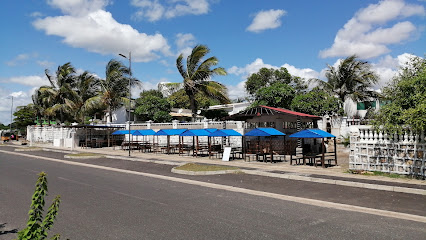
Ankarafantsika National Park Canyon Viewpoint
Experience the stunning vistas and rich biodiversity of Ankarafantsika National Park Canyon Viewpoint, a top destination for nature lovers and hikers in Madagascar.
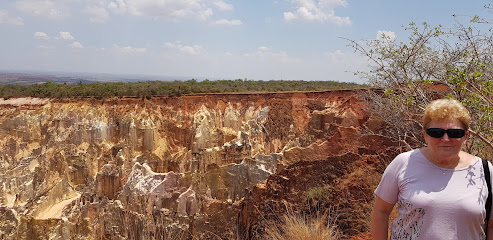
Bord de la mer
Explore the scenic beauty and vibrant culture at Bord de la Mer in Mahajanga, Madagascar, a perfect coastal paradise for tourists.
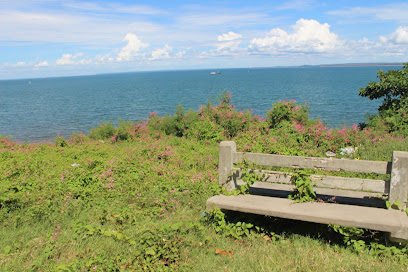
Piscine naturelle d'Anjohibe
Explore the breathtaking Piscine Naturelle d'Anjohibe, a hidden paradise in Madagascar known for its crystal-clear waters and stunning natural beauty.
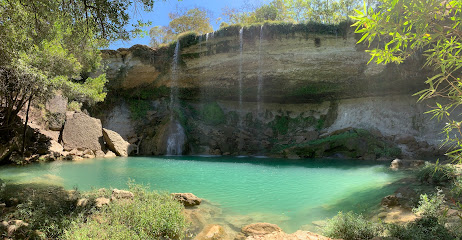
Ticket office Ankarafantsika National Park
Experience the pristine beauty and biodiversity of Ankarafantsika National Park, Madagascar's natural sanctuary for wildlife and adventure enthusiasts.
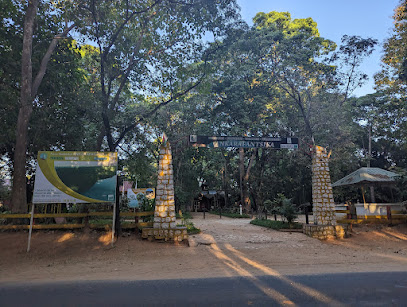
Cascade de Mahafanina
Explore the stunning Cascade de Mahafanina, a hidden waterfall gem in Madagascar offering breathtaking views and a serene natural escape.

Phare de katsepy
Experience the breathtaking views and rich maritime history at Phare de Katsepy, a stunning lighthouse in Mahajanga, Madagascar.
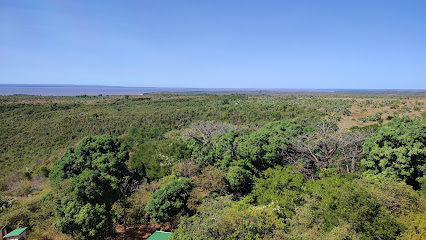
Grottes de Belobaka
Explore Grottes de Belobaka, a natural wonder in Mahajanga, Madagascar, known for stunning limestone caves and rich biodiversity.
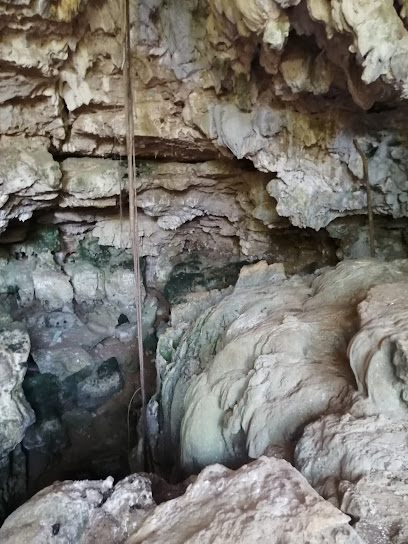
Ankarafantsika
Discover Ankarafantsika, a breathtaking mountain peak in Madagascar, offering stunning views, rich biodiversity, and unforgettable adventures.
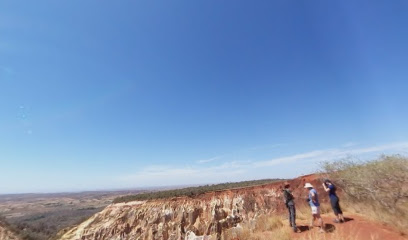
Center of Katsepy
Explore the vibrant culture and breathtaking views at the Center of Katsepy, a must-visit destination on Madagascar's stunning coastline.
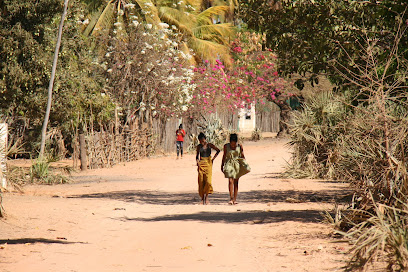
Circuit Retendrika (Ankarafantsika National Park)
Discover the breathtaking beauty of Circuit Retendrika in Ankarafantsika National Park - a paradise for nature lovers and wildlife enthusiasts in Madagascar.
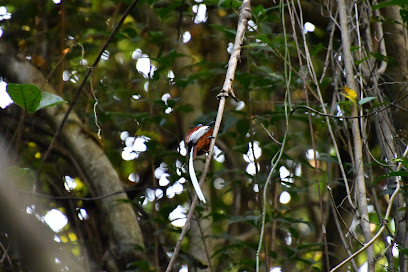
Boulevard
Discover the enchanting Boulevard in Mahajanga, where lush landscapes meet vibrant local culture, creating an unforgettable experience in Madagascar.
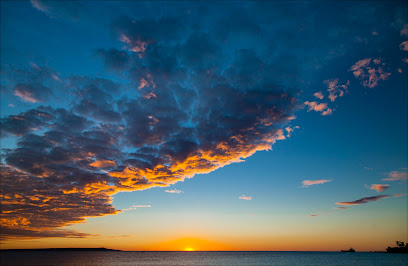
Lake Ravelobe
Explore Lake Ravelobe, Madagascar's premier bird-watching area, where nature thrives and tranquility reigns supreme, perfect for wildlife enthusiasts.

Essential places to dine
Sakamanga Hôtel
Discover comfort and culinary delights at Sakamanga Hôtel in Antananarivo - your gateway to Madagascar's vibrant culture.
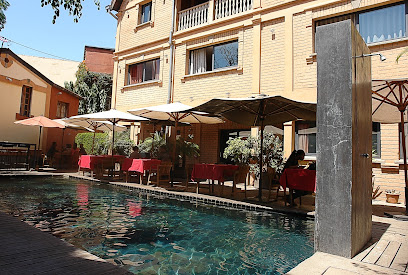
Le Carnivore - Restaurant Bar Lounge
Experience the vibrant flavors of Madagascar at Le Carnivore - Antananarivo's premier restaurant bar lounge offering exquisite local cuisine.
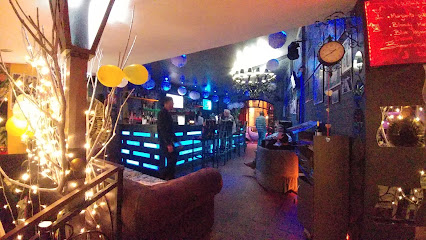
Marais Restaurant Madagascar
Experience unparalleled Haute French cuisine at Marais Restaurant Madagascar in Antananarivo – where culinary excellence meets elegance.
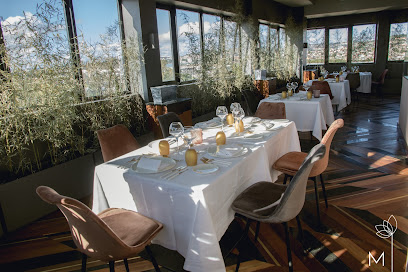
Sakamanga Restaurant
Discover authentic European cuisine at Sakamanga Restaurant in Antananarivo – where every meal is an unforgettable journey through flavors.
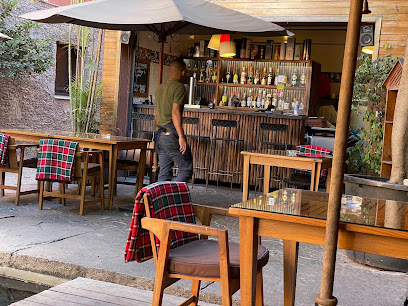
L'ORION RESTAURANT
Discover authentic Malagasy cuisine at L'Orion Restaurant in Antananarivo – where every dish tells a story.
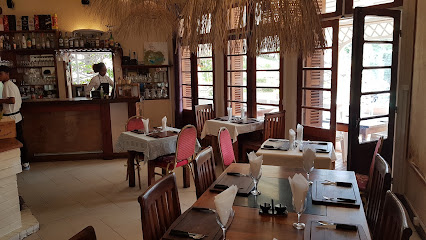
Grill du Rova
Experience authentic Malagasy cuisine at Grill du Rova in Antananarivo – where tradition meets taste in every bite.
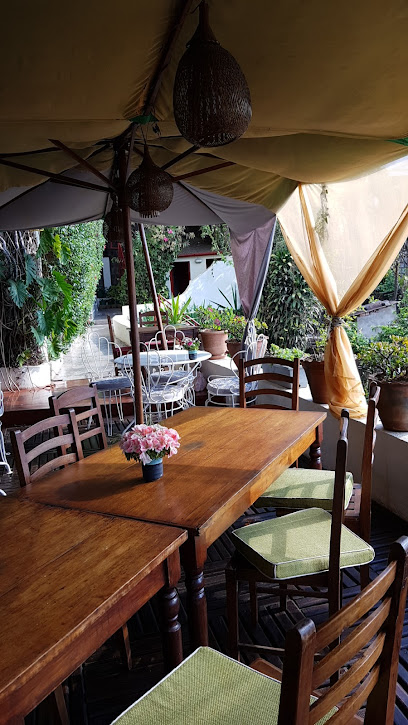
Gargotte Chez Ariane
Experience authentic Malagasy cuisine at Gargotte Chez Ariane on Île aux Nattes - a must-visit destination for food lovers in Madagascar.
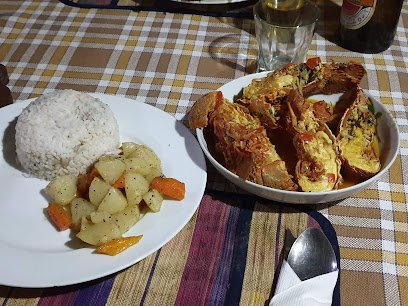
Relais d'Ankarafantsika
Experience authentic Malagasy cuisine at Relais d'Ankarafantsika in Mahajanga, where every dish tells a story of Madagascar's rich culinary heritage.
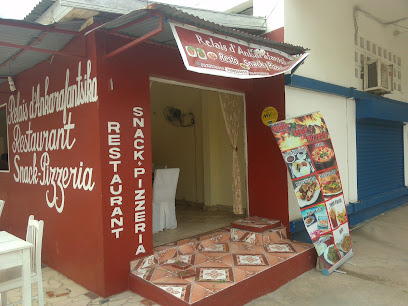
Lakana Restaurant
Experience exquisite seafood dining at Lakana Restaurant in Befotaka - where fresh flavors meet stunning ocean views.
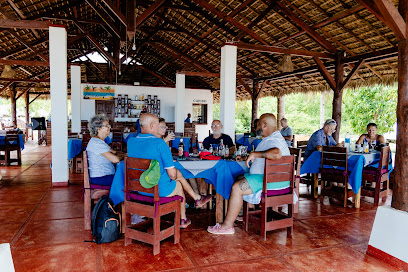
Resto Ntsika
Experience authentic Malagasy cuisine at Resto Ntsika in Antananarivo - a culinary gem blending tradition with contemporary dining.
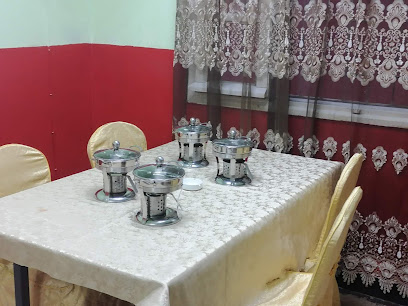
Gargote Baobab Halal Restaurant
Experience the rich flavors of Madagascar at Gargote Baobab Halal Restaurant - a culinary gem in Antsohihy offering authentic halal dishes.
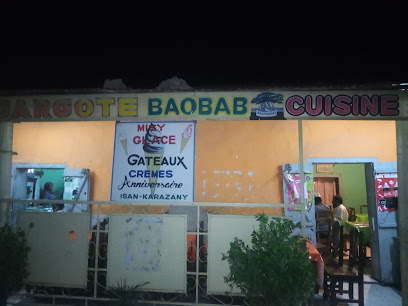
Kanana
Experience authentic Malagasy cuisine at Kanana in Antananarivo – where local flavors meet cultural heritage.
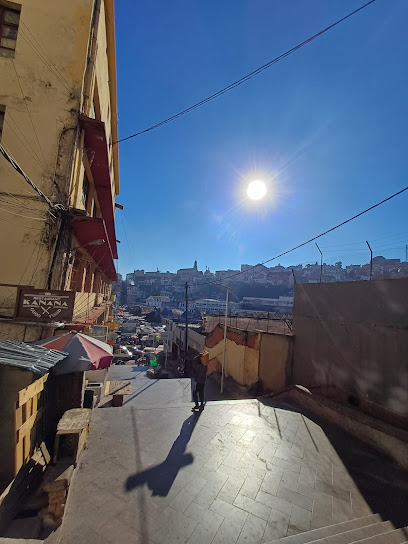
Ankarana Resto
Discover authentic Malagasy flavors at Ankarana Resto in Antsiranana - where every meal tells a story.
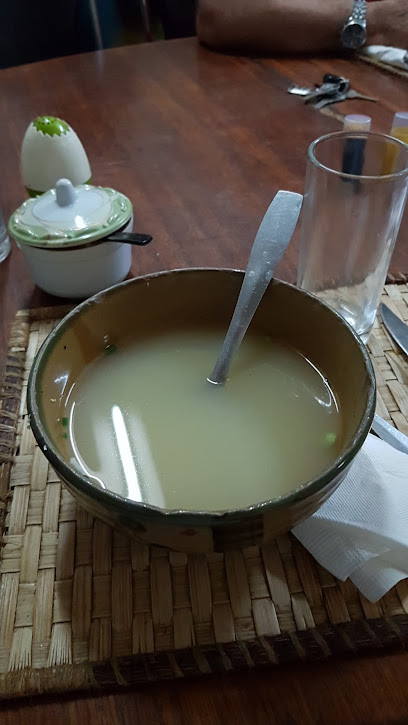
Markets, malls and hidden boutiques
Park Narodowy Ankarafantsika
Explore the breathtaking landscapes and unique biodiversity of Park Narodowy Ankarafantsika, Madagascar's hidden gem for nature lovers and adventure seekers.
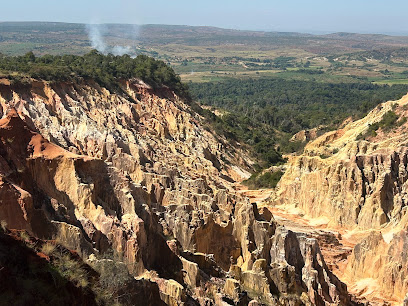
Depot Ketaka
Depot Ketaka in Marovoay: Your trusted pharmacy for health supplies and medications while exploring Madagascar's beauty.

Depot De Medicament Dantanimora
Explore the essential Depot De Medicament Dantanimora pharmacy in Ankazomborona, your reliable source for healthcare needs in Madagascar.

MAKI AMBOVOALANANA
Discover the heart of Malagasy craftsmanship at MAKI AMBOVOALANANA, a boutique in Mahajanga offering authentic local crafts and souvenirs.
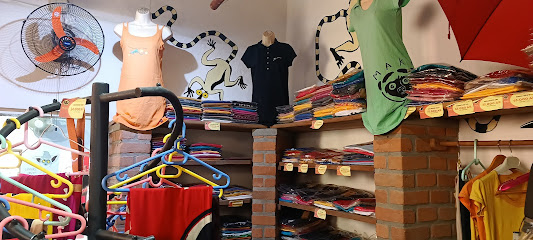
Quincaillerie MIRARY
Discover Quincaillerie MIRARY in Antanambazaha, your go-to hardware store for quality tools and home improvement supplies in Madagascar.
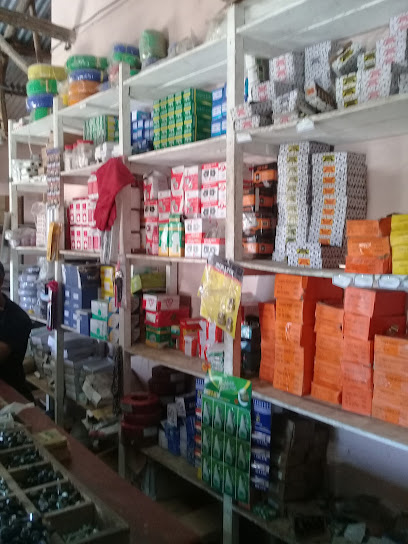
MIALY BOUTIQUE
Explore Mialy Boutique in Mahajanga for unique Malagasy gifts, showcasing the vibrant culture and artistry of Madagascar.
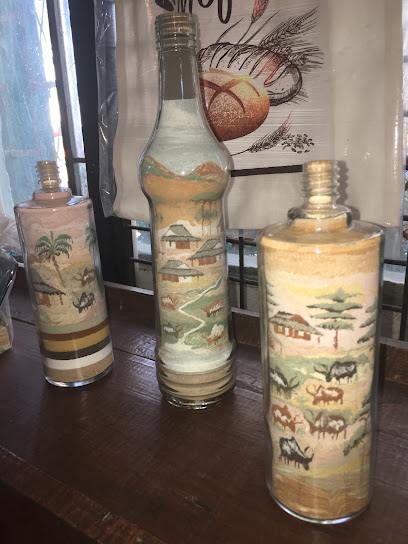
Housseni Store, « le coin des épices et des saveurs »
Discover the rich flavors of Madagascar at Housseni Store, your destination for local spices and culinary treasures in Mahajanga.
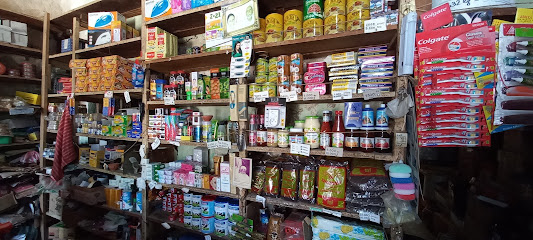
Depot De Medicament Ianja
Explore Madagascar with peace of mind knowing Depot De Medicament Ianja provides essential health supplies for travelers.

Boutique Canal plus
Boutique Canal Plus in Mahajanga: A vibrant shopping destination blending local culture, retail therapy, and delightful culinary experiences.
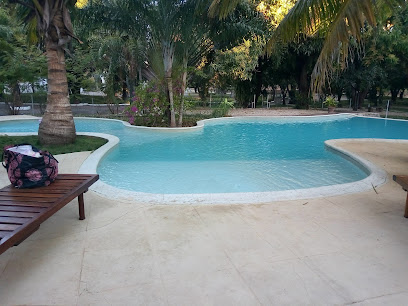
TSARA SOA FRIPE MAJUNGA
Explore the vibrant local fashion scene at Tsara Soa Frip Majunga, where unique styles meet the cultural essence of Madagascar.

Manga
Discover the local flavors and vibrant atmosphere at Manga, the must-visit grocery store in Mahajanga, Madagascar.

Epi-Bar Hasina chez Jeanne
Explore the vibrant flavors of Madagascar at Epi-Bar Hasina chez Jeanne, Anjiajia's beloved grocery store for fresh produce and local delicacies.

Dispensaire SAF/FJKM Ambondromamy
Explore the vibrant Dispensaire SAF/FJKM Ambondromamy in Antanambazaha for local crafts, delicious cuisine, and a taste of Malagasy culture.

Green Leaf
Explore Green Leaf in Mahajanga for unique local crafts and authentic Malagasy souvenirs that showcase the vibrant culture of Madagascar.

Depot De Medicament Miarina
Depot De Medicament Miarina offers vital health products and services for tourists in Madagascar, ensuring your well-being during your travels.

Essential bars & hidden hideouts
AMIN-TSIKA BAR Le chez nous
Discover the lively ambiance and local charm at AMIN-TSIKA BAR Le chez nous in Mahajanga, a perfect spot for drinks and socializing.
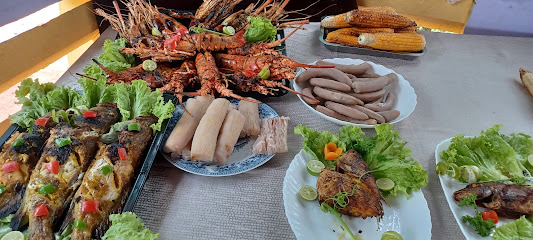
Le Bon Alibi
Discover the vibrant nightlife at Le Bon Alibi, a charming bar in Mahajanga offering local drinks and a welcoming atmosphere.

ÉPI-BAR AINA
Discover the lively atmosphere of ÉPI-BAR AINA in Mahajanga, where refreshing drinks meet vibrant local culture in a perfect nightlife setting.

Blues Rock Café
Discover the lively ambiance and rich musical culture at Blues Rock Café in Mahajanga, Madagascar, where relaxation meets entertainment.
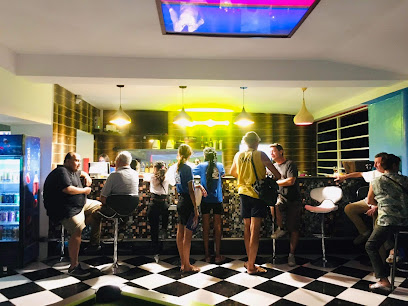
BAR LE CAPITAL
Discover the lively ambiance and refreshing cocktails of Bar Le Capital, a must-visit bar in Mahajanga, Madagascar, perfect for unwinding after a day of exploration.

Lounge Bar 401
Experience the vibrant nightlife at Lounge Bar 401, Mahajanga's premier destination for cocktails, music, and unforgettable evenings.
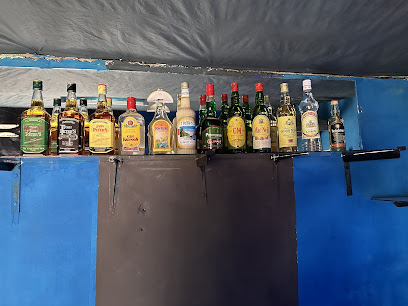
Rabenera
Discover the vibrant nightlife and local flavors at Rabenera, the heart of Mahajanga's social scene.

Epi-bar Kintana A.Centauri
Discover the whimsical charm of Epi-bar Kintana A.Centauri in Mahajanga, where cosmic vibes meet refreshing drinks and vibrant social scenes.
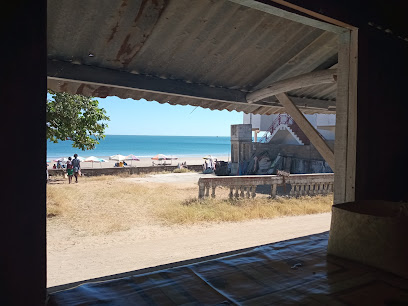
Chez Maman'i Bôlô
Experience the vibrant nightlife of Mahajanga at Chez Maman'i Bôlô, the ultimate karaoke bar for fun and cultural connection.

Bar Nambinina
Discover the vibrant local culture at Bar Nambinina, a cozy bar in Sud offering unique drinks and a welcoming atmosphere.

Bar Mangabe Antanimasaja
Discover the vibrant atmosphere of Bar Mangabe Antanimasaja in Mahajanga, a must-visit bar for authentic Malagasy drinks and lively local culture.

KINESSA
Experience the vibrant nightlife at KINESSA, a charming bar in Mahajanga, Madagascar, where locals and tourists meet for refreshing drinks.

Snack BAR TSATSILA
Experience the vibrant local culture at Snack BAR TSATSILA in Mahajanga, where refreshing drinks and a lively atmosphere await.

Snack Valy
Discover the vibrant atmosphere of Snack Valy in Mahajanga, where local drinks, lively ambiance, and friendly faces await you.
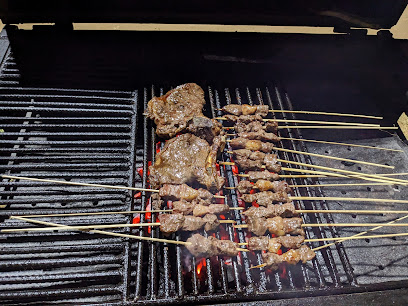
KGB
Experience the vibrant nightlife of Mahajanga at KGB, a bar offering local drinks and a welcoming atmosphere perfect for all travelers.
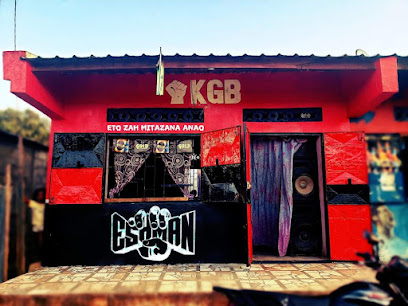
Local Phrases about Ankarafantsika National Park
-
- HelloSalama
[sa-la-ma] - GoodbyeVeloma
[ve-lo-ma] - YesEny
[e-ny] - NoTsia
[tsi-a] - Please/You're welcomeAzafady
[a-za-fa-dy] - Thank youMisaotra
[mi-sa-ou-tra] - Excuse me/SorryAzafady
[a-za-fa-dy] - How are you?Inona ny vaovao?
[i-no-na ny va-ou-va-o] - Fine. And you?Tsara. Ary ianao?
[tsa-ra. a-ri-a-na-o] - Do you speak English?Miteny teny Anglisy ve ianao?
[mi-te-ny te-ny ang-li-sy ve ia-na-o] - I don't understandTsy mahay
[tsi ma-ha-y]
- HelloSalama
-
- I'd like to see the menu, pleaseTianao hiara-maso ny menio azafady
[tia-nao hi-a-ra-ma-so ny me-ni-o a-za-fa-dy] - I don't eat meatTsy mihinam-bary aho
[tsi mi-hi-na-m-ba-ry a-ho] - Cheers!Mazotoa!
[ma-zo-to-a] - I would like to pay, pleaseTianao hiakatra ny vola azafady
[tia-nao hi-a-ka-tra ny vo-la a-za-fa-dy]
- I'd like to see the menu, pleaseTianao hiara-maso ny menio azafady
-
- Help!Fanantenana!
[fa-na-tena-na] - Go away!Mamono!
[ma-mo-no] - Call the Police!Miantso ny mpitandro filaminana!
[mi-ant-so ny m-pi-tan-dro fi-la-mi-na-na] - Call a doctor!Miantso dokotera!
[mi-ant-so do-ko-te-ra] - I'm lostNampidirina aho
[nam-pi-di-ri-na a-ho] - I'm illMiasa
[mi-a-sa]
- Help!Fanantenana!
-
- I'd like to buy...Tianao hanaraka...
[tia-nao ha-na-ra-ka] - I'm just lookingManao fitia
[ma-na-o fi-ti-a] - How much is it?Fa ny ahy no atao?
[fa ny a-hy no a-ta-o] - That's too expensiveMamono be ny vola
[ma-mo-no be ny vo-la] - Can you lower the price?Avela ny vola azafady
[a-ve-la ny vo-la a-za-fa-dy]
- I'd like to buy...Tianao hanaraka...
-
- What time is it?Havako aiza ny ora?
[ha-va-ko ai-za ny o-ra] - It's one o'clockReny ity
[re-ny i-ty] - Half past (10)Efatra sy folo
[e-fa-tra sy fo-lo] - MorningMaraina
[ma-ra-i-na] - AfternoonAlina
[a-li-na] - EveningMainty
[main-ty] - YesterdayOmaly
[o-ma-ly] - TodayAnio
[a-ni-o] - TomorrowAndroany
[an-dro-a-ny] - 1Iray
[i-ray] - 2Roa
[ro-a] - 3Telo
[te-lo] - 4Efatra
[e-fa-tra] - 5Dimy
[di-my] - 6Enina
[e-ni-na] - 7Fiteny
[fi-te-ny] - 8Valo
[va-lo] - 9Sivy
[si-vy] - 10Folo
[fo-lo]
- What time is it?Havako aiza ny ora?
-
- Where's a/the...?Aiza ilay...
[ai-za i-lay] - What's the address?Inona ny adiresy?
[i-no-na ny a-di-re-sy] - Can you show me (on the map)?Azafady avereno aho (amin'ny sarita)?
[a-za-fa-dy a-ve-re-no a-ho a-min-ny sa-ri-ta] - When's the next (bus)?Aiza ny faharoa (bus)?
[ai-za ny fa-ha-ro-a bus] - A ticket (to ....)Fikambanana (hianatra any ...)
[fi-kam-ba-na-na (hi-a-na-tra a-ny)]
- Where's a/the...?Aiza ilay...
History of Ankarafantsika National Park
-
Ankarafantsika National Park, located in the Boeny Region of Madagascar, was established in 1927 as a forest reserve. It became a national park in 2002, covering an area of approximately 1,350 square kilometers. The park was created to protect the region's unique biodiversity, which includes several species of lemurs, birds, and reptiles, many of which are endemic to Madagascar.
-
The Sakalava people, the indigenous inhabitants of the region, have a deep cultural connection to the land that now encompasses Ankarafantsika National Park. Their traditional practices, including agriculture and fishing, have coexisted with the local flora and fauna for centuries. The Sakalava have a rich oral history that includes tales of the forest's creation and the spirits that inhabit it.
-
During the French colonial period in Madagascar, the region now known as Ankarafantsika was recognized for its rich natural resources. The French undertook various projects to exploit these resources, including logging and the establishment of plantations. Despite these activities, efforts were made to conserve parts of the forest, leading to the creation of the initial forest reserve.
-
Following Madagascar's independence from France in 1960, the newly formed government recognized the importance of preserving its unique ecosystems. Ankarafantsika was designated as a national park in 2002, reflecting a broader commitment to conservation. This transition marked a significant shift in the management and protection of the area's biodiversity.
-
Ankarafantsika National Park is renowned for its incredible biodiversity. The park is home to eight species of lemurs, including the critically endangered Coquerel's sifaka. Additionally, it hosts over 120 species of birds, 75 of which are endemic to Madagascar. The park's diverse ecosystems, ranging from dry deciduous forests to wetlands, support a variety of plant and animal life, making it a critical area for conservation.
-
Ankarafantsika has become a hub for scientific research and ecotourism. Researchers from around the world come to study its unique species and ecosystems. The park's infrastructure has been developed to support sustainable tourism, offering opportunities for visitors to engage with the natural environment while contributing to its preservation. Educational programs and guided tours help raise awareness about the importance of conservation.
Ankarafantsika National Park Essentials
-
Ankarafantsika National Park is located in the Boeny Region of Madagascar, approximately 450 kilometers northwest of Antananarivo, the capital. The most convenient way to get there is by flying into Antananarivo's Ivato International Airport (TNR). From Antananarivo, you can either rent a car or hire a private taxi for the roughly 8-hour drive to the park. Alternatively, you can take a bus or a taxi-brousse (shared taxi) from the capital to Mahajanga, which is about 115 kilometers from the park, and then take a local taxi to Ankarafantsika.
-
Within Ankarafantsika National Park, transportation options are limited. The most common way to get around is by foot, as many of the park's attractions are accessible via hiking trails. For exploring further afield, renting a car in Antananarivo or Mahajanga is advisable. Local guides are available for hire within the park and can provide valuable insights as well as transportation via 4x4 vehicles for harder-to-reach areas.
-
The official currency in Madagascar is the Malagasy Ariary (MGA). Credit cards are not widely accepted in Ankarafantsika National Park, so it is essential to carry enough cash. ATMs are available in Antananarivo and Mahajanga, but it is wise to withdraw sufficient cash before heading to the park. Local vendors and guides typically expect payment in cash.
-
Ankarafantsika National Park is generally safe for tourists, but like any travel destination, it is important to take precautions. Avoid walking alone at night and always keep an eye on your belongings. Be cautious of pickpockets in crowded areas. It is advisable to stick to well-known trails and hire a local guide for excursions. There are no specific high-crime areas within the park targeting tourists, but it is always best to stay vigilant.
-
In case of an emergency, dial 117 for police assistance and 124 for medical emergencies. The nearest medical facilities are in Mahajanga. It is highly recommended to have travel insurance that covers medical emergencies. Carry a basic first aid kit for minor injuries and health issues, as pharmacies are not readily available within the park.
-
Fashion: Do wear lightweight, breathable clothing suitable for hiking, and always carry a hat and sunscreen. Avoid wearing flashy jewelry. Religion: Do respect local customs and traditions, especially when interacting with local communities. Public Transport: Do be patient and courteous when using public transport, as schedules can be unpredictable. Greetings: Do greet people with a smile and a friendly 'Salama' (hello). Eating & Drinking: Do try local foods and drinks, but always ensure they are from reputable sources. Don't drink tap water; always use bottled or purified water.
-
For an authentic experience, visit the nearby village of Ampijoroa, where you can learn about local culture and traditions. Engage with local guides and park staff, who are often happy to share their knowledge about the park's unique flora and fauna. Don't miss the chance to see the iconic Coquerel's sifaka and other endemic wildlife. Participate in night walks organized by the park to observe nocturnal species in their natural habitat. Lastly, visit the Ravelobe Lake for a relaxing boat ride and bird-watching opportunities.
Nearby Cities to Ankarafantsika National Park
-
Things To Do in Majunga
-
Things To Do in Antananarivo
-
Things To Do in Toamasina
-
Things To Do in Andasibe
-
Things To Do in Nosy Be
-
Things To Do in Antsirabe
-
Things To Do in Chirongui
-
Things To Do in Bandrele
-
Things To Do in Dembeni
-
Things To Do in Sada
-
Things To Do in Mamoudzou
-
Things To Do in Chiconi
-
Things To Do in Koungou
-
Things To Do in Acoua
-
Things To Do in Antsiranana



